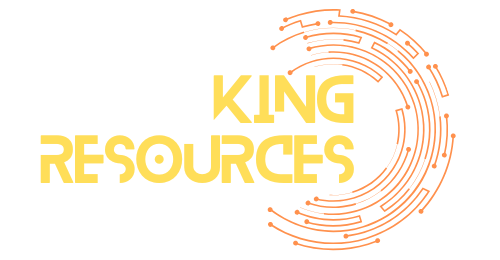Imagine waking up every morning knowing your home is powered by the sun. No more wrestling with energy bills that feel like they’re auditioning for a horror movie. Solar-powered homes are not just eco-friendly; they’re a smart investment that can save money while saving the planet.
With technology advancing faster than a squirrel on espresso, solar panels are becoming more efficient and affordable. It’s like giving your house a superhero cape, turning it into a green energy powerhouse. Plus, who wouldn’t want to brag about having a home that runs on sunshine? Embracing solar energy isn’t just about being trendy; it’s about being practical and responsible. So why not dive into the world of solar-powered homes and discover how they can transform your life—one sunbeam at a time?
Table of Contents
ToggleOverview of Solar Powered Homes
Solar powered homes utilize photovoltaic systems to convert sunlight into electricity. These homes typically incorporate solar panels on rooftops, maximizing sunlight exposure. Many homeowners notice significant reductions in energy bills, with some achieving near-zero energy costs.
A solar powered home often includes energy storage solutions, allowing residents to store excess energy for nighttime use. This capability enhances energy independence and reliability. Innovations in solar technology have improved panel efficiency, resulting in higher energy output even in less sunny regions.
Factors influencing the adoption of solar powered homes include local incentives and regulations. Certain states offer tax credits and rebates, making investment more attractive. Energy companies might provide incentives for homeowners transitioning to solar systems, further facilitating the shift.
Homeowners often report the environmental benefits of solar energy. Reductions in carbon footprints contribute to a cleaner environment. Generating clean energy through solar also supports sustainability efforts, appealing to eco-conscious individuals.
Realtors recognize solar powered homes as valuable assets. Properties equipped with solar systems often sell faster and at higher prices. Many buyers express interest in homes that offer long-term savings and energy efficiency.
Overall, the growth of solar powered homes signals a shift towards renewable energy sources. Increased awareness and advancements ensure that solar technology continues to revolutionize how energy is utilized in residential settings.
Benefits of Solar Powered Homes

Solar-powered homes offer numerous advantages, significantly enhancing sustainability and saving costs. The following sections detail specific benefits.
Environmental Impact
Solar energy drastically reduces greenhouse gas emissions, contributing to a healthier planet. Utilizing solar panels generates clean electricity, minimizing reliance on fossil fuels. This shift lowers the overall carbon footprint of households, supporting global climate goals. Many studies confirm that increased solar adoption leads to a cleaner atmosphere and improves air quality. Communities benefit when homeowners switch to solar, as widespread adoption can lead to a notable reduction in pollution levels. Solar homes actively participate in efforts to fight climate change, making them an important choice for environmentally conscious individuals.
Economic Advantages
Cost savings represent a primary benefit of solar-powered homes. Homeowners frequently witness significant declines in their monthly energy bills, making solar a financially wise choice. In many cases, individuals report seeing savings of up to 50% on energy expenses. Additionally, local and federal incentives, such as tax credits and rebates, often enhance the affordability of solar installations. Property values for homes equipped with solar systems frequently appreciate, as buyers view these homes as long-term investments. Over time, the reduced reliance on grid electricity leads to substantial financial savings, positioning solar homeowners for financial stability in the future.
Key Components of Solar Powered Homes
Solar powered homes rely on several essential components for optimal performance, including solar panels and energy storage systems.
Solar Panels
Solar panels serve as the primary source of electricity generation in solar powered homes. These devices convert sunlight into electricity through photovoltaic technology. Homeowners can install panels on rooftops or in open areas to maximize exposure to direct sunlight. Modern solar panels require less space and yield higher efficiency, making installations more accessible. With advancements in technology, many homeowners report reductions in energy costs by as much as 50%. Various financial incentives, such as tax credits, make solar panels an attractive option for those exploring renewable energy solutions.
Energy Storage Systems
Energy storage systems play a vital role in ensuring energy availability when sunlight is scarce. Homeowners use batteries to store excess energy generated during sunny days for use at night. Popular options include lithium-ion or lead-acid batteries, each offering different capacities and lifespans. Effective energy storage allows residents to achieve greater energy independence and enhances reliability during power outages. Many systems are designed to integrate smoothly with solar panels, creating a cohesive energy management solution. Investing in energy storage significantly bolsters a home’s efficiency and can further reduce dependence on the grid.
Challenges in Implementing Solar Powered Homes
Solar-powered homes present several challenges that potential homeowners should consider. These obstacles can impact the overall appeal and feasibility of solar energy solutions.
Initial Costs
Initial costs pose a significant barrier for many homeowners. Solar panel installations require substantial upfront investments, typically between $15,000 and $25,000 for average-sized homes. While financial incentives like tax credits help offset these expenses, not everyone is eligible or aware of them. Homeowners often find financing options, such as solar loans or leases, appealing, yet these arrangements can complicate the purchasing decision. Evaluating costs versus long-term savings can make the decision-making process daunting.
Maintenance Requirements
Ongoing maintenance plays a crucial role in the long-term efficiency of solar energy systems. Solar panels generally require minimal upkeep, but dirt accumulation and shading can reduce energy efficiency significantly. Regular cleaning, ideally every six months, ensures optimal performance and maximizes energy production. Additionally, homeowners must consider battery maintenance and potential replacement after a certain number of cycles. Such requirements can lead to unforeseen costs, as specific maintenance issues may demand professional assistance. Understanding these maintenance needs aids homeowners in preparing for future expenses.
Future of Solar Powered Homes
Emerging technologies continue to enhance the efficiency and affordability of solar-powered homes. Innovations in photovoltaic systems promise to increase energy conversion rates, leading to even greater savings for homeowners. Research indicates that by 2025, solar panel efficiency may exceed 25%, significantly improving energy generation in smaller spaces.
New advancements in energy storage solutions further drive the future of solar energy. Lithium-ion batteries, for example, have seen cost reductions of over 70% since 2010. These systems allow homeowners to use stored energy during peak hours, optimizing electricity use and further lowering costs.
Competition within the industry also plays a crucial role in shaping this future. As more companies invest in solar technology, prices for both solar panels and installation services continue to decline. In some regions, homeowners can expect installation costs to drop below $10,000 with local incentives factored in.
Regulatory changes can influence the adoption rates of solar-powered homes. Many local governments implement policies supporting sustainable energy investments, including tax credits and rebates. Homeowners benefit directly from these initiatives, increasing the appeal of solar systems.
Consumer interest in sustainability fuels demand for solar energy. Research reveals that over 70% of potential homebuyers prioritize eco-friendly features, including solar panels. Consequently, homes equipped with solar energy systems tend to sell for 20% more than traditional homes.
Long-term projections suggest that solar energy will dominate residential energy markets within the next decade. Industry forecasts predict a compound annual growth rate of 20% for solar installations, indicating a growing acceptance of renewable energy. With ongoing technological improvements and increasing awareness of climate change, the future of solar-powered homes appears promising and transformative.
Solar-powered homes represent a significant step towards sustainable living. By harnessing the sun’s energy homeowners can enjoy reduced energy costs while contributing to a cleaner environment. The advancements in solar technology make these systems more efficient and accessible than ever before.
As more people recognize the benefits of solar energy the demand for solar-powered homes continues to grow. This shift not only enhances property values but also promotes energy independence. With financial incentives and a supportive regulatory landscape the future looks bright for homeowners considering solar solutions.
Embracing solar power is not just a trend; it’s a responsible choice that aligns with global efforts to combat climate change. As innovations continue to emerge the potential for solar-powered homes to transform lives and communities is undeniable.









